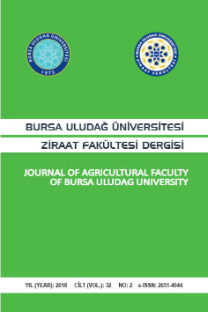Çiğ balık (Sushi) ve sağlığımız
ağır metaller, gıda bulaşıklılığı, çiğ gıdalar, parazitler, gıda güvenirliği, balık (gıda), halk sağlığı, çiğ balık, suşi
Raw fish (Sushi) and our health
heavy metals, food contamination, raw foods, parasites, food safety, fish, public health, raw fish, sushi,
___
1. BANG HO, DYERBERG J, NIELSEN AB. Plasma Lipid and Lipoprotein Pattern in Greenlandic West-Coast Eskimos. Lancet 1971; 1: 1143-1145.2. CASTELL JD. Fish as Brain Food. World Aqua 1988; 9: 21-22.
3. DEARDORFF TL. Epidemiology of Marine Fishborne Parasitic Zoonoses. Southeast Asian J. Trop Med Pub Health 1991; 22: 146-9.
4. DYERBERG J, BANG HO, STOFFERSEN E, MONCADA S, VANE JR. Eicosapentaenoic Acid Prevention of Trombosis and Atherosclerosis? Lancet 1978; 2: 117-119.
5. FELDHUSEN F. Seafood Transmitted Diseases. Deutsch Tier Wochen 1999; 106: 319-325.
6. GANOWIAK ZM, Sanitation in Marine Food Industry. In: SIKORSKI ZE, edt. Seafood: Resources Nutritional Composition and Preservation. CRC Press Inc. Boca Rato, Florida. 211-231, 1990.
7. HASEGAWA H, MATSUMOTO Y, HOSHINO A, IWASHITA K. Comparison of Effects of Wasabia japonica and Allyl Isothiocyanate on the Growth of Four Strains of Vibrio prahemolyticus in Lean and Fatty Tuna Meat Suspensions. Int J. Food Microbiol 1999; 49: 27-34.
8. HIRAI A, HAMAZAKI T., TREANO T. Eicosapentaenoic Acidand Platelets Function in Japanese. Lancet 1980; 2: 1132-1133.
9. http://www.13.waisays.com/fish.htm (29.04.2006)
10. http://www.chatzradio.net/forum/viewtopic.php?f orum=5&showtopic=3513 (14.05.2006)
11. http://www.eatsushi.com/article.asp?X=38 (15.05.2006)
12. http://www. fda.gov (22.05.2006)
13. http://www.northernproducts.com/html/body_ome ga_3s.html (27.04.2006)
14. http://www.uga.edu/seafood/SafeSeafood.htm (27.04.2006)
15. http://www.urbanlegends.about.com/library/blbrainworms4. htm (15.05.2006)
16. HUTCHINSON JW, BASS JW, DEMERS DM, MYERS GB. Diphyllobothriasis After Eating Raw Salmon. Hawaii Med Jour 1997; 56: 176- 177.
17. KAY RA. Microalgae as Food and Supplement. Cri Rev Food Sci Nutr 1991; 30:555-573.
18. NAWA Y, HALTZ C, BLUM J. Sushi Delights and Parasites: the Risk of Fishborne and Foodborne Parasitic Zoonoses in Asia. Clin Inf Diseas 2005; 41: 1297-303.
19. ONO H, TESAKI S, TANABE S, WATANEBE M. 6-methylsulfinylhexyl Isothiocyanate and its Holologues as Food-originated Compounds with Antibacterial Activity Against Escherichia coli and Staphylococcus aureus. Biosci Biotech Biochem 1998; 62: 363-365.
20. OSHIMA T. Anisakiasis-is the Sushi Bar Guilty? Parasitology Today 1987; 3: 44-48.
21. ÖZDEN Ö, GÖKOĞLU N. Sardalya balığının [Sardina pilchardus (Wal. 1792)] Soğukta Depolanması Sırasında Yağında Oluşan Değişimlerin İncelenmesi. Gıda 1997; 22: 309-313.
22. SHIN IS, LEE JM. Study on Antimicrobial and Antimuthagenic Activity of Horseradish (Wasabia japonica) Root Extracts. Bullet Korean Fish Soc 1998; 31: 835-841.
23. STADLBAUER V, HABERL R, LANGNER C, KREJS GJ, EHERER A. Annoying Vacation Souvenir: Fish Tapeworm (Diphyllobothrium sp.) Infestation in an Austrian Fisherman. Wien klin Woch 2005; 117: 776-779.
24. TAKABE K, OHKI S, KUNIHIRO O, SAKASHITA T, ENDO I, ICHIKAWA Y, SEKIDO H, AMANO T, NAKATANI Y, SUZUKI K, SHIMADA H. Anisakidosis: A Cause of Intestinal Obstruction from Eating Sushi. Am J Gastro 1998; 93: 1172-1173.
25. VLADIMIR I, SHENDERYUM P, BYKOWSKI,J. Salting and Marinating of Fish. In: SIKORSKI Z, edt. Seafood: Resources Nutritional Composition and Preservation. CRC Pres, Inc. Boca Raton, Florida. 147-162, 1990.
26. WEKELL MM, MANGER R, COLBURN K, ADAMS A, HILL W. Microbiological Quality of Seafoods: Viruses, Bacteria, and Parazites. In: SHAHIDI F, BOTTA JR, eds. Seafoods: Chemistry, Processing Technology and Quality. Blackie Academic & Professional, London. 196- 219, 1994.
27. WOONG KH, CHEUNG PCK. Nutritional Evaluation of Some Subtropical Red and Green Seaweeds Part II. In Vitro Protein Digestibility and Amino Asid Profiles of Protein Concentrates. Food Chem 2001; 72: 11-17.
- ISSN: 1301-3173
- Yayın Aralığı: 2
- Başlangıç: 1981
- Yayıncı: Ahmet Akkoç
Vulvo-vaginal atresia in a queen with mammary and uterine tumors: case report
Güneş SERİN, MEHMET ERKUT KARA, İlker SERİN
Kesimhanelerde broiler karkasların mikrobiyal yükü üzerine ozon ve klor uygulamalarının etkileri
Yangınsal bağırsak hastalığı ve probiyotiklerle güncel tedavi yaklaşımı
Çiğ balık (Sushi) ve sağlığımız
ORHAN YILMAZ, YAHYA ÖZTÜRK, MÜRSEL KÜÇÜK
Köpeklerde ovaryumların ultrasonografik ve postoperatif muayeneleri
